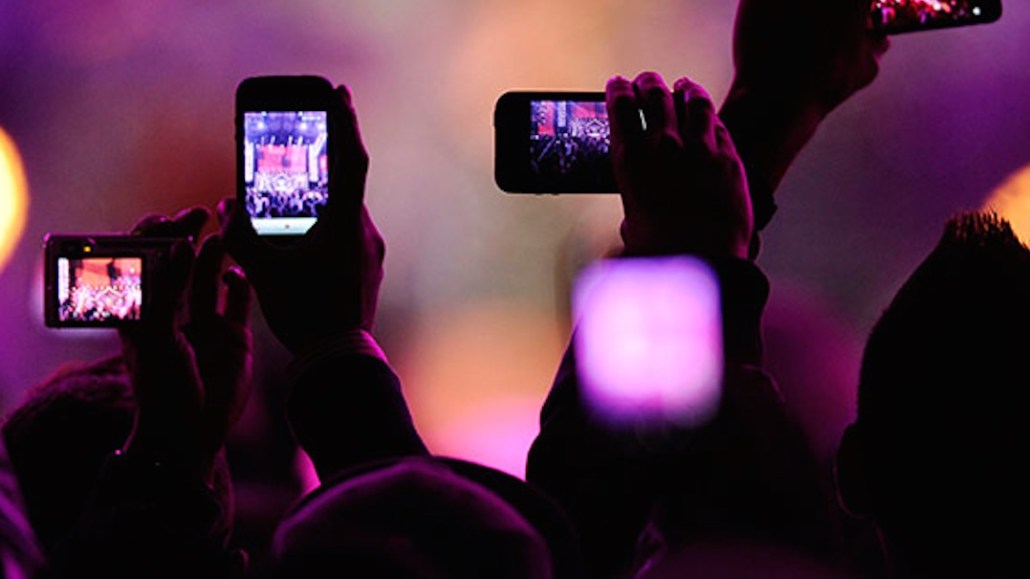‘We’re competing against crap’: The race is on to provide influencer marketing analytics

The rise of influencer marketing — where brands work with social stars and creators to create and distribute video, photos or text content — has led to a growing number of players clamoring to solve the nascent issues in measurement and safety.
Last week, two firms announced new moves to provide measurement for influencer marketing. Ahalogy created a third-party-verified influencer-marketing program that the firm says will go beyond social followers or other metrics to be able to select influencers that pass a “quality-traffic” test (that is, no bots) and verified engagement metrics, and it will double-check how paid media impressions are delivered.
The company is working with Moat for metrics to assess activity after users click through to influencer websites from social or advertising, so there are supposedly verified numbers for cost-per-visit campaigns. Ahalogy CEO Bob Gilbreath said that it essentially makes “influence” comparable to metrics used in other digital media.
“There is a race to standardization in influencer marketing,” said Whosay president Rob Gregory. “The moment has arrived where [influencer marketing] is an acknowledged thing that is crying out for some rules and regulations.” Whosay, which works with higher-level talent on YouTube and across Hollywood, is in the process of working out a standardized metric that will “bring sanity to the whole thing.”
Another company now getting into the space is Sylo. The company, which in 2016 worked with Mountain Dew to form its influencer team Mountain Dew Green Label, created a “scoring system” that calculates a Sylo score for every piece of content an influencer posts on either YouTube, Instagram, Facebook or Twitter. It’s an algorithm that weights engagement, consumption and reach. The idea is that you compare apples to apples, said Sylo co-founder Erick Schwab, who said clients were realizing that the way influencers tag their content and the way marketers search was way off.
Of course, adding nicely to this cleanup narrative is the increased attention brands have paid to how messy digital media has gotten — years after the fact. From murky supply chains to a convoluted ecosystem, marketers have taken it on themselves to make this the year they take all of this stuff seriously and bring digital media to task.
Betsey Lukens, digital media supervisor at agency Geometry Global, said the agency relies on data and insights to guide what it’s buying. In the past, it used to just look at a list and hope that who they were getting were reporting the right numbers and the ROI was right. Now, it’s more complicated.
Another media buyer, who spoke on condition of anonymity, said he doesn’t think third-party verification is necessary. “These types of companies will explode because they’re capitalizing on this big fear everyone has around ROI.” He said the key is to treat influencer marketing as a paid ad. “We’re using social metrics and verifying them, as opposed to a different measurement set.”
The confusion is clear. As influencer marketing has exploded, it’s taking up more space in budgets. A Mediakix survey reported that Instagram influencer marketing could reach $2 billion by 2019; and Digiday Research has also found that while brands continue to use influencers, the sheen is wearing off because of measurement and ROI issues.
“Influencer marketing is increasingly a big piece of our content distribution strategy, as we see these creators as partners of the brand helping us to build deeper connections with the young millennials who look up to them,” said PepsiCo head of brand marketing and media strategy Obioma Enyia. Enyia added that robust tracking and social media metrics have made the medium more transparent, and it is important to be realistic and specific on what “success” means. “While it’s easy as marketers to rely on benchmarks and traditional online metrics like views, we have to take into account others that might signal more engagement through actions taken.”
Create your own infographics
Agency executives tell stories of how influencers claim impression numbers that aren’t true or claim website traffic that can’t be checked. And because follower count remains the way brands try to track how much to pay, there’s a lot of unscrupulous follower buying. There are bot accounts, engagement hacks like Insta pods and lots of other fake activity — some of which Instagram itself has begun cracking down on.
“The fact is, we’re competing against crap,” said Gilbreath. “We just want a level playing field to compete on.”
More in Marketing

Pandora is betting on AI agents to scale service and emotional selling during the peak holiday season
Pandora is using AI agents to scale customer service and replicate emotional in-store selling online, just as peak season puts pressure on margins and teams.

Rembrand’s CEO wants to grow virtual ad placements in streaming, and he’s looking elsewhere for models
Omar Tawakol wants to improve advertising within the streaming world, and is working with advertisers and publishers to improve that experience.

Marketers are keen to use generative AI in ad campaigns, but hidden costs lurk
Marketers across the industry want to use AI to cut down on time spent in creative production. It’s not so simple in practice.








